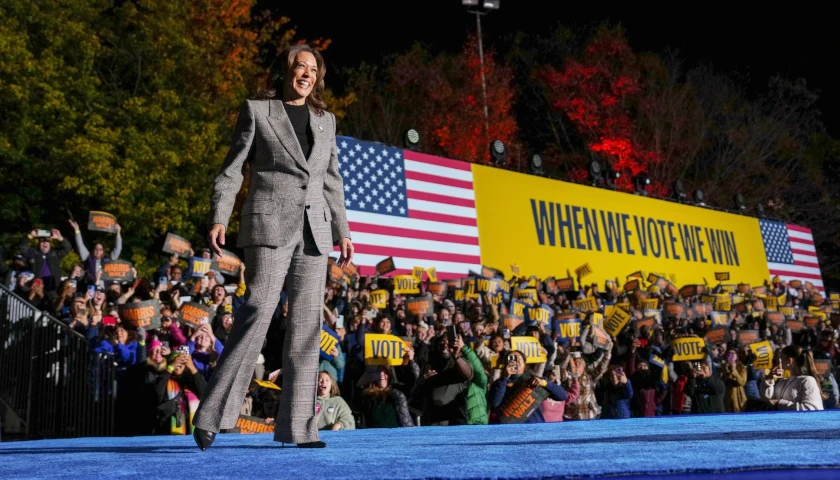by Greg Piper
Nearly a year ago, the respected research collaborative Cochrane drastically reinterpreted its own “systematic review” of randomized controlled trials (RCTs) on masking in response to media pressure, deeming them “inconclusive” after the review team found that masks make “little to no difference” against COVID-19 or influenza.
The Centers for Disease Control and Prevention is following Cochrane’s lead by publicly pressuring its advisers to revise their recommendations on masking in healthcare settings, which are based on its own systematic review that now undermines CDC preferences.
It could backfire on the feds. The White House’s promise to authorize COVID boosters before the Food and Drug Administration had evaluated them reportedly led the agency’s top two vaccine regulators to resign. Senior FDA officials pressured them to quickly approve Pfizer’s Comirnaty vaccine as well, despite their reservations about its heart-inflammation association.
Public officials and purported public health experts have endured a bad month when it comes to science interfering with their policy preferences.
The Rhode Island Department of Health nearly found itself in contempt of court for publishing a draft regulation saying it wouldn’t require scientific evidence before reimposing mask mandates in schools.
When parents who sued the agency over the mandate claimed the draft violated their settlement, the agency claimed it sent the “wrong draft” up the regulatory chain and threatened a counter motion against them.
Self-identified medical professionals and students are botching the science of monkeypox, too, according to a new study in the British Medical Journal’s BMJ Paediatrics Open.
Just out in @BMJ_PO we analyze tweets by public health "experts" during the Monkeypox outbreak in 2022
Led by brilliant med student @BenKnudsen31
Many falsely claimed the epidemic would reach schools or could be curbed by masking kidshttps://t.co/ssOzVOTLui pic.twitter.com/bxfAnJFF61
— Vinay Prasad MD MPH (@VPrasadMDMPH) January 31, 2024
Researchers reviewed their tweets about the virus and its risk to children and in schools from May-October 2022, when it was spreading almost exclusively through “gay and bisexual men.” The inaccurate information was sometimes “paired with longstanding advocacy for specific policy restrictions, such as masking in school.”
These purported experts overwhelmingly made false assertions about the risk, and users of the platform now known as X “were approximately 974 [times] more likely to encounter inaccurate than accurate information,” the study found.
The CDC’s Healthcare Infection Control Practices Advisory Committee had asked agency scientists to review the evidence for the effectiveness of surgical masks versus N95 respirators worn by “healthcare personnel caring for patients with respiratory infections,” rather than the mechanistic evidence from lab settings.
A presentation at HICPAC’s meeting last summer by Office of Guidelines and Evidence Review analyst Erin Stone found “no difference” between the two, while emphasizing “overall concerns with the evidence” due to “serious confounding” factors, the “retrospective nature” of most studies and failure of many to track compliance “objectively” or at all.
Scientists searched several research databases through Aug. 3, 2023, and the draft “systematic review and meta-analysis” confirmed no difference for lab-confirmed infections. While N95s did better for “self-reported” infections, respirators were also more frequently reported for difficulty breathing, headaches, dizziness, “skin barrier damage” and fatigue.
3) Digging through CDC meeting minutes, I found that a CDC scientist reported that respirators don't seem to work any better than masks.
This is NOT what CDC wants the public to hear. pic.twitter.com/Ejed7Rixgp
— Paul D. Thacker (@thackerpd) February 6, 2024
HICPAC followed by writing a draft guideline last fall to update the 2007 “isolation precaution” guideline.
In a Jan. 23 letter to the workgroup’s co-chairs, a designated federal official said stakeholders were raising “concerns or areas of confusion” about the draft’s discussion of N95s and surgical masks. The CDC will add “subject matter experts” to the committee to help answer its questions, he said.
Those questions could be read to imply that HICPAC should recommend N95s “for all pathogens that spread by the air,” regardless of whether they are “established,” as SARS-CoV-2 is now; specify that healthcare settings should allow “voluntary use” of N95s; and recommend “source control,” or masking of infected people, “at all times” in facilities.
Workgroup co-chairs Sharon Wright, of Beth Israel Lahey Health, and Michael Lin, of Rush University Medical Center, who also chairs the committee, did not respond to Just the News queries for their response to Kallen.
The draft could be “misread to suggest equivalency between facemasks and NIOSH Approved respirators,” National Institute for Occupational Safety and Health Director John Howard and National Center for Emerging and Zoonotic Infectious Diseases Director Daniel Jernigan wrote in a same-day blog post. This is “not scientifically correct nor the intent of the draft language.”
Their post drew 81 comments as of Wednesday afternoon, most cheering the CDC’s rebuke to HICPAC. One urged the agency to clean house because the advisers “contumaciously ignored public and expert commentary,” while another dismissed the “inadequate draft from the inadequately-staffed HICPAC.”
“Please consider that healthcare workers are a [sic] human beings too, not just robots, before implementing n95 for all healthcare settings all the time,” a dissent read, warning that personnel would flee and questioning how many commenters “worked x12 hr shifts in n95 respirators.”
The CDC’s own Emerging Infectious Diseases published a study early in the COVID pandemic of systematic reviews of 14 RCTs, which found no “substantial effect on transmission of laboratory-confirmed influenza” from wearing masks.
The agency didn’t distinguish between masks in COVID recommendations until January 2022, when it told people they could wear N95s “when greater protection is needed or desired.” Two months later, when the White House said SARS-CoV-2 spreads primarily via aerosols, the CDC still claimed it was mostly through “respiratory fluids.”
Other research has questioned whether N95s are an improvement in real-world settings.
The Canadian government and World Health Organization funded a rigorous international peer-reviewed study a year ago that found no statistically significant difference between N95s and surgical masks. A U.K. government meta-review last year found no real-world evidence that N95s and equivalent masks protect those at highest risk of severe COVID.
Six months before the feds flipped their position on masks in spring 2020, the Journal of the American Medical Association published an RCT that found “no significant difference” between N95s and surgical masks against lab-confirmed influenza.
Former Senate Finance Committee investigator Paul Thacker, who helped expose financial ties between doctors and pharmaceutical companies, flagged the CDC’s pushback in a analysis Tuesday.
7) In their draft guidance, the CDC's advisors recommend masks as "source control" meaning they stop sick people from getting others sick.
But the CDC wants recommendations for healthy people to wear masks. pic.twitter.com/EenfO4nSu0
— Paul D. Thacker (@thackerpd) February 6, 2024
Though HICPAC recommended masks for source control – worn by those who are infected – it said personnel should otherwise avoid them for “extended use” and not reuse them because “they can serve as a reservoir of infectious material,” including N95s.
The committee repeatedly emphasized personnel should do a “seal check” whenever they don “fit-tested” respirators, which are “expected” to have better filtration efficacy.
This means “N95s don’t really work at all unless they’ve been fit-tested, never soiled, and used only once,” Thacker wrote. “Meanwhile, I’ve encountered numerous people walking around with a ratty N95 stuffed into their pocket or purse, and getting pissed off if others don’t have one.”
He said the CDC didn’t respond to his queries. It didn’t respond to Just the News queries Wednesday, either.
– – –
Greg Piper has covered law and policy for nearly two decades, with a focus on tech companies, civil liberties and higher education.





